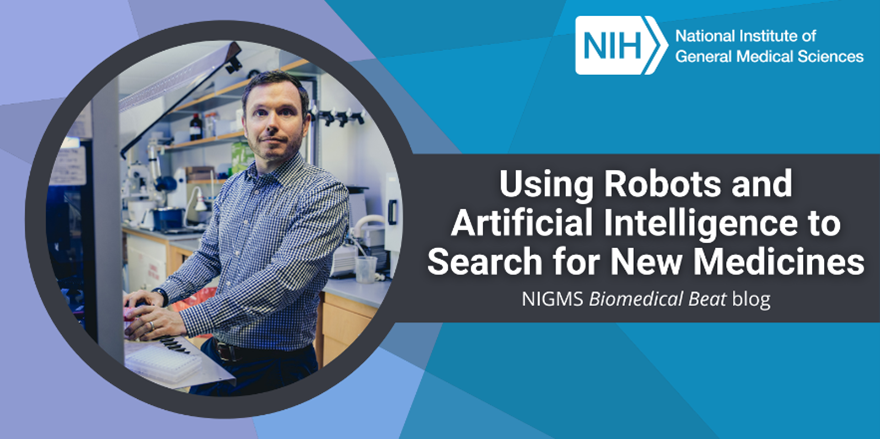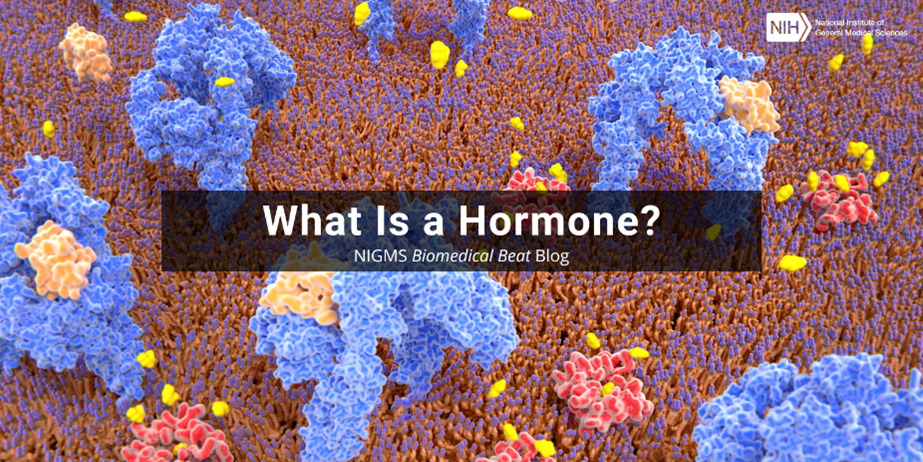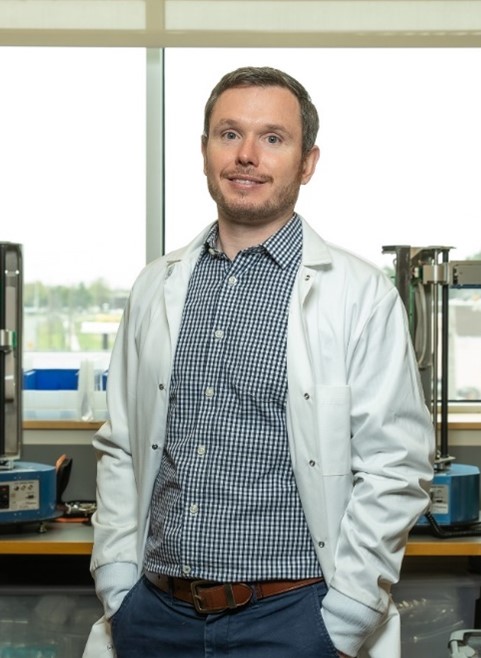
Adam Gormley, Ph.D., describes himself as a creative and adventurous person—albeit, not creative in the traditional sense. “Science allows me to be creative; to me, it’s a form of art. I love being outdoors, going on sailing trips, and spending time adventuring with my family. Research is the same—it’s an adventure. My creative and adventurous sides have combined into a real love for science,” he says. Dr. Gormley currently channels his passion for science into his position as an assistant professor of biomedical engineering at Rutgers University in Piscataway, New Jersey.
Learning How the World Works
Both of Dr. Gormley’s parents worked in science and medicine—his mother as a medical doctor and his father as a physician-scientist—and they instilled in him a curiosity for how the world worked. When he was young, Dr. Gormley and his parents would tinker with cars or boats and fix broken household items together, all the while talking about the individual parts and how they functioned as a whole. “I always had that technical, hands-on side of me,” he says.
This technical nature led Dr. Gormley to pursue a bachelor’s degree in mechanical engineering at Lehigh University in Bethlehem, Pennsylvania, followed by a Ph.D. in bioengineering at the University of Utah in Salt Lake City in the lab of Hamid Ghandehari, Ph.D. There, he developed a technology called laser-guided drug delivery using nanoparticles that accumulate in specific cells, such as cancer cells. In principle, a doctor could inject the nanoparticles into a patient’s bloodstream and then “paint” diseased tissue where the nanoparticles have accumulated with laser light to activate them. The activated nanoparticles heat up, and the heat triggers a cellular response that makes the cells easier to target with medications.
Near the end of his graduate studies, Dr. Gormley had a chance encounter with Molly Stevens, Ph.D., a materials scientist at the Imperial College of London, when they shared a ride from the airport to a scientific conference. “Sometimes, wonderful events just happen. By the end of that car ride, it was pretty obvious to me that I was moving to London for my postdoctoral studies,” says Dr. Gormley. There, and at his second postdoctoral researcher (postdoc) position at the Karolinska Institute in Stockholm, Sweden, he worked in biomaterials development and nanomaterial engineering.
During his time in Europe, Dr. Gormley developed a new, more efficient polymer chemistry technique that allows scientists to synthesize hundreds, or even thousands, of polymer materials in a single experiment, reducing the time needed to make the building blocks of new biomaterials.
Recruiting the Help of AI
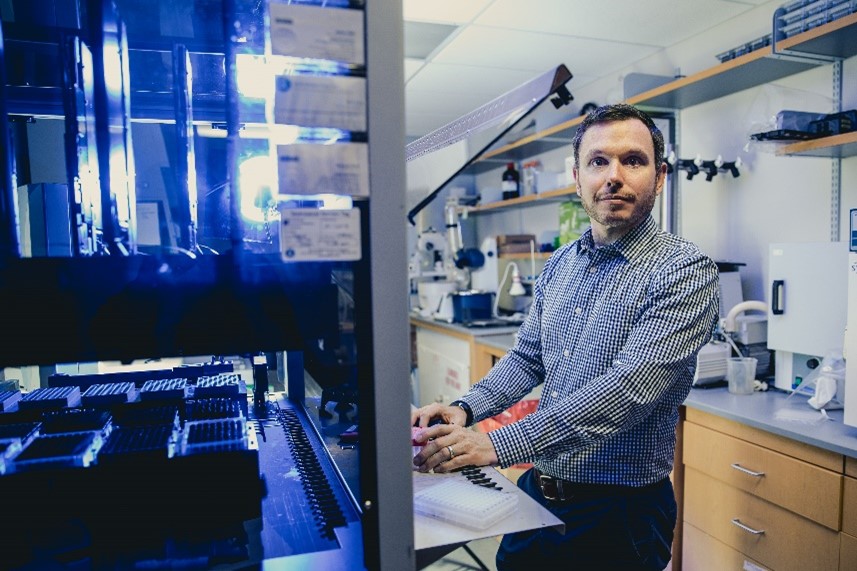
In 2017, Dr. Gormley moved to Rutgers University and started his own lab focused on designing new materials, therapeutics, and techniques for drug delivery. Many currently used medicines are biopharmaceuticals, meaning they are derived from biological molecules, and in some cases, are even produced by living cells. Examples of this type of medicine include monoclonal antibodies, the hormone insulin, and immune system regulators.
Dr. Gormley wants to create synthetic mimics of biopharmaceuticals. Not only would these synthetic medicines be easier and less expensive to make, but they wouldn’t require cells for production, eliminating possible cell contamination or death and resulting production delays. Synthetic medicines could also be designed to have more desirable properties than their biological counterparts, such as remaining in the body longer.
Using the highly efficient polymer synthesis technique Dr. Gormley developed as a postdoc, researchers in his lab started designing new synthetic medicines. After a couple of years, Dr. Gormley realized he faced a problem: The technique was too labor intensive to be used at the large scale they needed, and his team wouldn’t be able to keep up with the work. So, he put his creativity and mechanical engineering background to work and began programming laboratory equipment to automate experiments. With that, robots were helping out in the lab, and because of their greater workload capacity, they were producing tons of data.
That was when Dr. Gormley realized he had a second problem: Highly complex experiments that generate vast amounts of data are nearly impossible for researchers to study because humans don’t have the analysis capacity. “We call this the curse of dimensionality, which essentially means that the problem is too complex for a human to understand,” explains Dr. Gormley. So, he turned to artificial intelligence (AI) and machine learning (ML), which use computer programs to identify patterns in large datasets and make conclusions or predictions, to quickly and accurately analyze his data.
To drive the design of synthetic medicines even further, Dr. Gormley is interested in combining AI/ML and laboratory automation technology into one integrated system. “In this way, we can create what we call self-driving laboratories. We would assign the system a task and allow the automation to perform the necessary experiments. Then the AI/ML gets trained on the data, makes a decision, and proposes the next experiment, which the automation performs,” he says. The AI/ML and the automation directly exchange information with each other, without human input, until they reach a solution to the assigned task. An integrated system like this can increase lab efficiency by performing repetitive tasks, freeing up human researchers to perform more critical thinking, project analyses, or sensitive experiments.
The Scientific Journey
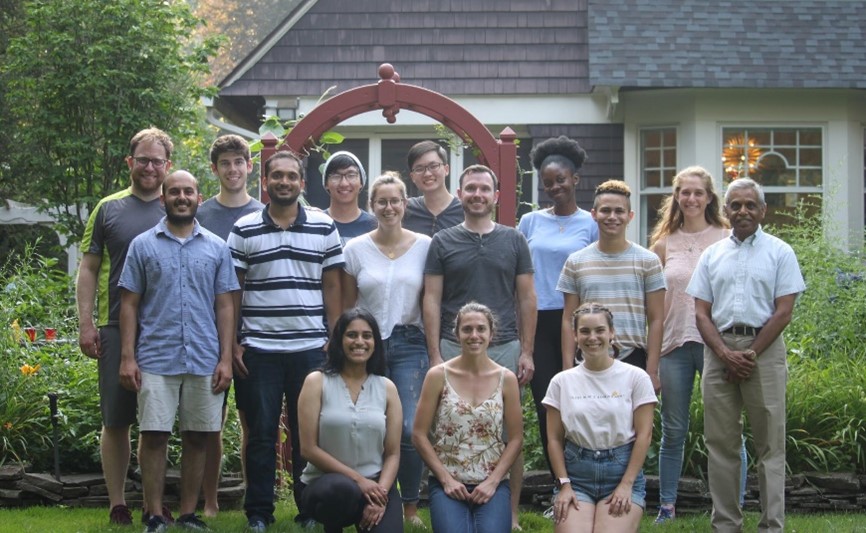
The addition of AI/ML and laboratory automation also frees up time for one of Dr. Gormley’s favorite roles as head of his lab: mentoring. He often emphasizes to his students that science is more about the journey than the destination and that there will be hiccups along the way. “Failure is an important part of the journey. But unfortunately, that failure can be paralyzing and create a feeling of imposter syndrome in my students,” he says. He reminds them that experiments that end differently than they expect aren’t a result of shortcomings, and they should view their data as valuable.
Another benefit of using AI/ML is that the computer will take all acquired data into account when finding patterns. “Humans naturally tend to focus only on the small percentage of ‘successful’ experiments, but one of the beauties of AI/ML is that it gets rid of the connotation of a failed experiment. It looks at both the successful and unsuccessful data because it’s all valuable,” Dr. Gormley explains. Changing the mindset around “unsuccessful” experiments encourages his students to overcome the feeling of failure and embrace their adventurous nature to see where the scientific journey takes them.
Dr. Gormley’s research is supported by the NIGMS Maximizing Investigators’ Research Award program through grant R35GM138296.


